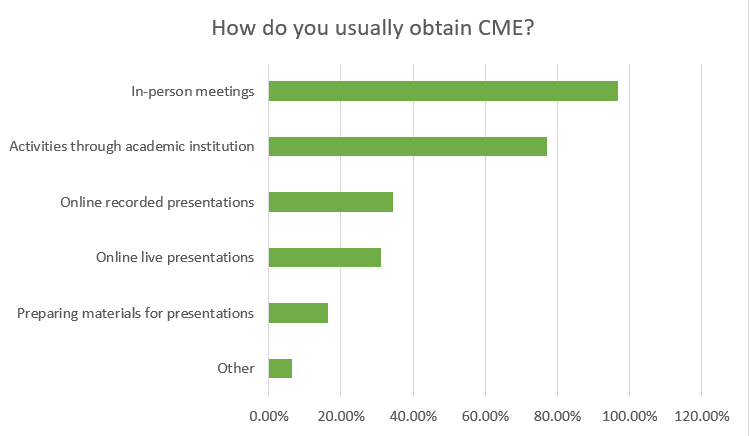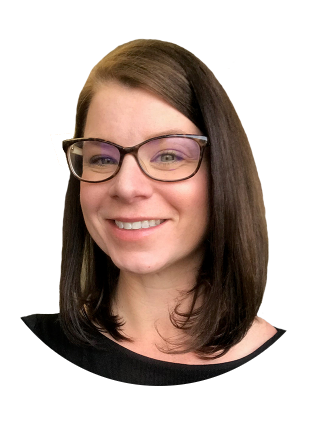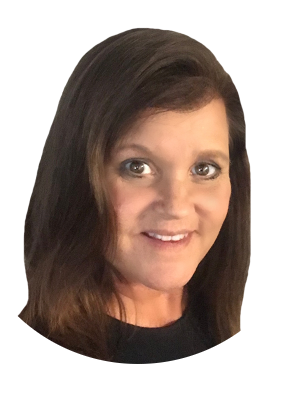Introduction
A learning management system (LMS) can provide medical and healthcare specialty societies the tools to create and deliver online educational activities. Many nonprofits utilize an LMS to generate non-dues revenue by offering fee-based online education. The Association of Academic Physiatrists (AAP) is a professional medical society primarily comprised of physician members in academic institutions. The AAP launched an LMS which was branded the “Virtual Campus” in 2017 to provide needed continuing medical education (CME) for our members while generating additional revenue for the society.
The Virtual Campus went live with seven archived webinars, monthly journal CME articles, and a maintenance of certification (MOC) self-assessment examination. During the first year, an extremely small number of members accessed the LMS to participate in one of the online opportunities. The number of individuals participating in the CME journal opportunity increased from previous years because of the convenient online format. However, this increase only lasted for one year, and the AAP continued to see insignificant activity on the Virtual Campus over an extended period of time. The AAP attempted to improve engagement by enhancing advertising and producing more and higher quality content over this course of time. While the number and variety of CME products offered on the Virtual Campus grew, the number of participants stayed small and even decreased in some areas.
In 2020, the AAP placed annual meeting content on the Virtual Campus for participants to access due to travel issues related to the COVID-19 pandemic. In 2021, like most societies, the AAP offered a fully virtual meeting with the sessions being available for CME online for 45 days following the meeting. Both attempts at offering post-event online education from the annual meeting were met with similar results — little to no engagement with typically 80–150 individual Virtual Campus participants per year out of more than 2,500 members (6% or less).
Underutilized Virtual Campus
|
Year
|
Webinars/ Participants
|
Journal Activities/ Participants
|
MOC Activities/ Participants
|
Annual Meeting Content (Proceedings/ Participants)
|
|
2017
|
7/11
|
15/88
|
1/11
|
0
|
|
2018
|
12/57
|
12/77
|
1/27
|
0
|
|
2019
|
13/25
|
12/90
|
2/67
|
0
|
|
2020*
|
7/13
|
12/143
|
1/62
|
49/12
|
|
2021**
|
0
|
12/86
|
0
|
50/308
|
|
2022
|
0
|
10/101
|
0
|
0
|
*International meeting drew slightly increased engagement.
**Virtual meeting with extended content available for 45 days drew slightly increased engagement.
The AAP monitored the number of members accessing the LMS and was disappointed with utilization despite the resources and promotion that went into it. The AAP compared the engagement of learners with the Virtual Campus versus the annual in-person meeting and found a vast difference. The AAP staff studied this question to determine the root cause for this gap in participation.
Our hypothesis, based on anecdotal evidence, was that academic physiatrists simply do not need more CME credit because of all the credit available to them from academic duties throughout the year.
Method
A survey was developed and sent to 127 AAP program directors, a vital part of the AAP membership. We had 61 respondents — a response rate of 48%. The survey was brief to maximize participation and to focus on the key issue at hand.
The program directors were asked the following four questions:
- How many CME hours do you complete each year on average?
- How do you usually obtain your CME?
- Are you aware of the AAP Virtual Campus?
- How many hours of online recorded CME do you typically complete in one year?
Results
A vast majority of survey respondents (76%) responded that they completed over 30 CME hours a year, with 52% of those respondents noting they complete even more at over 35 CME hours.

The respondents overwhelming noted that they receive the CME they need through attending and presenting at in-person meetings (97%) and through their academic institutions (77%). Only 30% noted that they receive CME through online presentations or webinars. Over 70% of the respondents were aware of the AAP Virtual Campus. However, our analysis shows that only a handful of members complete CME opportunities on the Virtual Campus. Fifty-seven percent of the respondents indicated they typically complete 0–4 online CME opportunities per year.

It was noted that the online recorded and live presentation CME are typically associated with the growing virtual or hybrid options now offered in conjunction with live in-person meetings.
Discussion
According to the American Board of Physical Medicine and Rehabilitation (ABPMR), “Continuing medical education is a cornerstone of the ABPMR continuing certification program. Completing an average of 30 category 1 CME credits every year helps you stay current with the latest research and innovation in the field.” The data confirmed that AAP members seem to be reaching and often surpassing this metric.
Since few academic physiatrists choose to complete online CME, and with the many free options available, it is difficult to create fee-based online activities that engage this small community of members seeking online CME. Based on the Virtual Campus analysis, comparison to the annual meeting data and the survey results, the AAP Education Department discovered that creating additional online CME opportunities for AAP physician members is not productive. The AAP is not achieving the goal of providing needed CME to our members or the goal of generating non-dues revenue for the society. The AAP academic membership is less inclined to participate in online CME opportunities than broader physician groups that include private practitioners. AAP physician members are able to obtain the CME they need through other opportunities. Academic institutions have an obligation to assist their physicians in completing their CME requirements to keep their physicians certified. Therefore, institutions often offer their own version of a “Virtual Campus” and create educational opportunities through grand rounds and other programming. Additionally, academic physiatrists regularly attend live meetings to teach and learn. Through these opportunities, academic physiatrists are surpassing their CME requirements and do not need to seek out additional online activities.
Conclusion
The AAP learned a valuable lesson about our niche academic membership and their CME needs through trial and error when perhaps the AAP could have completed the needs assessment and research about online CME interest prior to investing so much time and resources in building and promoting the Virtual Campus. Moving forward, the AAP has shifted our focus away from CME toward online bite-sized educational opportunities for residents and medical students. We have found that the generation of in-training physiatrists take advantage of more online learning opportunities to get ahead of the curve without having to spend time and money on travel. The AAP is also offering more town-hall virtual meetups for academic physiatrists to connect and discuss challenges and solutions rather then CME-based webinars and learning modules.
Key takeaways from AAP’s Virtual Campus experience and research include:
- Online fee-based CME may generate revenue and fulfill a need in some medical societies, but did not with our academic society. Societies should do their due diligence.
- Developing membership personas may help differentiate generational preferences in online vs. in-person education.
- Everyone has learned to be adaptable and flexible with online vs. in-person education in response to the pandemic. Continue to be nimble. Changes can happen quickly.
Finally, the AAP encourages a culture of innovation and trying new things even if they crash and burn. Each failure is a valuable learning experience and should be embraced. The AAP learned about our membership on a deeper level and how to better meet their needs moving forward.
 Tiffany Knowlton, JD, MBA, has been the executive director of AAP since 2013. She received her JD from Hamline University and her MBA from St. Thomas — both Minnesota schools.
Tiffany Knowlton, JD, MBA, has been the executive director of AAP since 2013. She received her JD from Hamline University and her MBA from St. Thomas — both Minnesota schools.
 Bernadette Rensing is the external affairs director of the AAP. She started as the communications manager in 2010. In her current role, Bernadette facilitates and strengthens partnerships between the AAP and business, industry and philanthropic organizations.
Bernadette Rensing is the external affairs director of the AAP. She started as the communications manager in 2010. In her current role, Bernadette facilitates and strengthens partnerships between the AAP and business, industry and philanthropic organizations.
 Candace Street is the education director of the AAP. She has been with the AAP since 2014 and oversees AAP meetings and education programs.
Candace Street is the education director of the AAP. She has been with the AAP since 2014 and oversees AAP meetings and education programs.